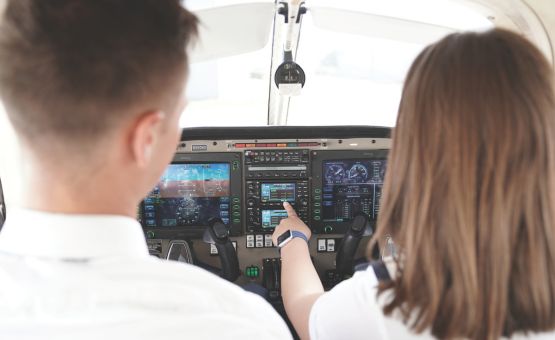By Tim Genc
I remember working with a student who was preparing for her instrument flight test in our American Flyers airline academy. When we were at the point that her approaches and knowledge were to practical test standards, she asked me to give her a week before I scheduled her check ride. I didn’t think much of it and as promised, a week later, she called up and told me that now, she was ready. She then proudly announced that over the last week, she had read the FAR/AIM cover to cover to prepare for the flight test. Wow!
While having the appropriate knowledge – or at least knowing where to find it =- is certainly an important component of your flight test. The most common critique that we hear from DPEs and inspectors alike is not that applicants didn’t know their stuff; it’s that they didn’t conduct the check ride as the Pilot in Command.
Now I know that any flight test – first, second, third … sixth – can be a nerve-wracking experience. So often, we don’t want to say the wrong thing and the result is that we wait to speak until spoken to. Remember, a significant part of this review of your skills is your ability to take command and responsibility for the flight, and to be the captain. If that’s the attitude you take when you start the check ride, it starts on a high note and sets a good tone for the rest of the oral and flight.
Example: The DPE/Inspector walks in and there you are, professionally dressed, prepared and waiting for him. You stand up, greet him and let them know that you have a room waiting for the check ride. You walk into the room and sit down at a table where in from of the DPEs chair is a paper 8710 with your FTN (IACRA FAA Tracking Number) and Application ID, an envelope with the check ride fee, your logbook with all of the required hours and tasks highlighted and tabbed, the aircraft maintenance logs highlighted and tabbed – with a summary of the required inspections on top of them. In front of you, you sectional chart is laid out with the route for you cross-country highlighted and planned, the route log and weight and balance sitting on top, an E6B and plotter next to the chart and there you sit, with the PTS opened in your hand. After allowing the examiner a moment to contemplate adopting you, you tell them, “I’ve got the computer in the lobby already set up on IACRA. I’ve prepared a plan of action for our lesson today and if it’s alright with you, I’d like to start with privileges and limitations of the private pilot certificate.” Not only is the examiner thoroughly convinced that you are well prepared for this flight test, but you probably shaved 30-45 minutes off of your check ride. Look at how much knowledge you just conveyed to them without him or her having to ask a single question!
This is exactly what the DPE is hoping for. They actually don’t want to be a dentist (you know … pulling teeth); he or she wants you to take charge and let them evaluate you. If this is how you start your flight test out, chances are the examiner will happily sit back and enjoy being a passenger for the remainder of your time together, and things will go much smoother in your flight and throughout the rest of your airline academy.










